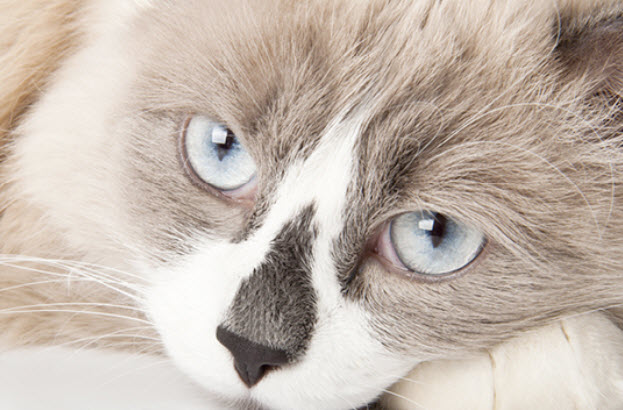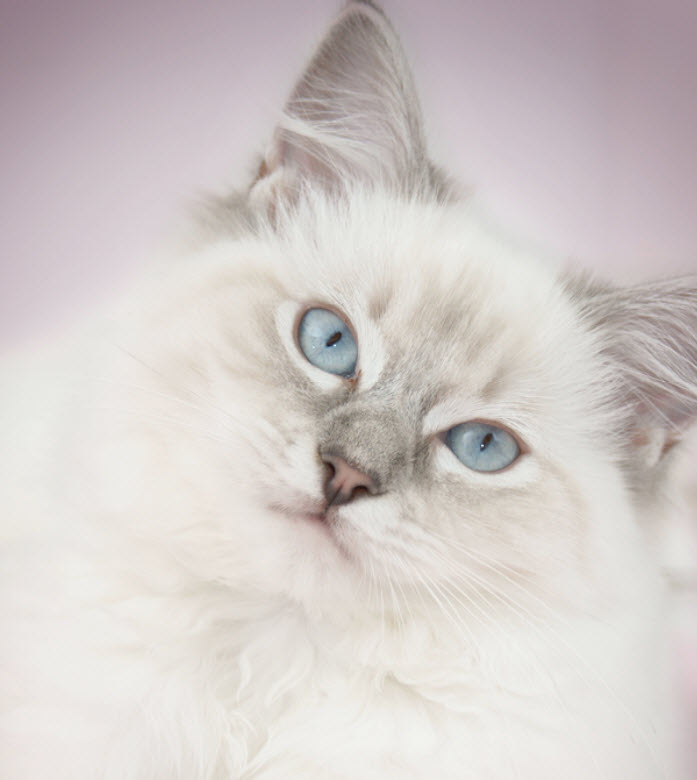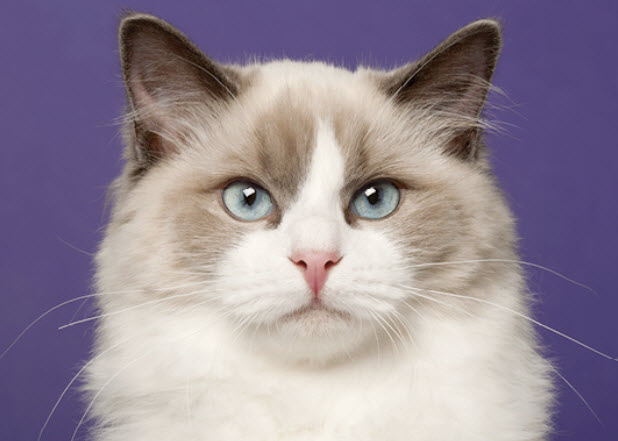hip dysplasia in ragdoll cats
The mode of inheritance is polygenic. Hip dysplasia is the abnormal development of the hipbone and the femur coxofemoral joint.
Hip dysplasia in cats was until recently unheard of but recent research indicates that felines of all breeds are capable of developing feline hip dysplasia.

. As in the dog hip dysplasia in cats is assumed to result from a combination of genetic several genes are likely to be involved along with environmental dietary and lifestyle factors. Signs of Hip Dysplasia. Joint looseness laxity can lead to degenerative joint disease.
Abyssinians American shorthair. Large breeds of dog are more commonly diagnosed with hip dysplasia but cats are by no means immune. With that being said we can find the following range of clinical signs.
Genetic Diseases in Purebred Cats. This is a condition where there is a malformation. As a result of this thickening your cats.
List of American pure bred cat breeds and their predisposition to genetic diseases. Ragdoll cats are prone to Hypertrophic Cardiomyopathy. Diagnostics for feline hip dysplasia When examining the hip veterinarians should perform abduction in addition to flexion extension and rotation.
Hip dysplasia happens mostly in dogs and is not common in cats. In some cats hip dysplasia will not cause any obvious disease but in others especially if more severely affected over time significant and painful arthritis may develop. Sadly these conditions are painful for.
They can begin experiencing symptoms between 4 and 12 months of age with weakness in the joints until degenerative signs. Hip dysplasia affects many species including the human. The clinical picture is one where fluid filled cysts grow within the kidney either in utero during childhood or even in adulthoodAs the cat grows these cysts increase in size and can lead to severe kidney.
Hip Dysplasia has usually been seen in almost all cats and due to their larger size The Ragdoll is more prone to this diseaseThis is caused by joint failure and specially hip joints that becomes weak and are no longer able to bear the weightThis disease can also appear due to obesity in animalsThe ball and the socket present in the hip joints are disturbed by this disease and they. This is a ball and socket type joint with the head of the femur fitting smoothly and tightly into the hip joint in a normal cat. Ragdoll cats may develop hip dysplasia which can be hereditary or due to the abnormal weight gain of the cat.
While hip dysplasia is most commonly associated with dogs and is certainly more common in dogs than it is in cats nevertheless our feline companions may also be affected by the condition which can lead to pain difficulty moving freely and a progressive degeneration of the hip joints. Primary glaucoma mannosidosis seborrhea polycystic kidney disease peripheral pseudocysts patellar luxation hip dysplasia. When getting up from sleep or a nap the cat may be.
Ragdolls are known for their calm disposition and docile nature. Hip dysplasia is an abnormality of the hip joint in which the hip socket doesnt fully cover the ball at the end of the femur thigh bone. Hip dysplasia is a common concern among Ragdoll owners.
If your veterinarian suspects hip dysplasia it can be diagnosed by x-raying the hips and femoral heads. These cats are also prone to develop eye problems and deafness. Changes in the cat are often most pronounced affecting the acetabulum the socket of the hip joint while the femoral head or ball of the hip joint often remains relatively unaffected.
Even if they arent pedigree breeds you may want to consider getting your cat checked out by a vet before introducing them to any other animals or children if they display signs of Hip Dysplasia. This condition is characterized by abnormal growth of hip tissues and this may sometimes lead to deformity. One of the first signs of hip dysplasia in cats is stiffness.
Ragdoll cats may develop hip dysplasia which can be hereditary or due to the abnormal weight gain of the cat. Hip Dysplasia in Ragdoll Cats. It is characterized by a thickening of the myocardial mass in the left ventricle which causes a decrease in the volume of the ventricles in the heart.
Clinical signs of feline hip dysplasia include limping or other apparent difficulties in walking avoidance of physical activity expression of pain if the hip is touched and persistent licking or chewing at the hip area. A cat might have one dysplastic joint or both may be affected. Polycystic kidney disease is a hereditary disease which is most commonly diagnosed in Persian and Exotic Shorthair cats but is also prevalent in Ragdoll cats.
This condition is characterized by abnormal growth of hip tissues and this may sometimes lead to deformity. Hip Dysplasia has usually been seen in almost all cats and due to their larger size The Ragdoll is more prone to this diseaseThis is caused by joint failure and specially hip joints that becomes weak and are no longer able to bear the weightThis disease can also appear due to obesity in animalsThe ball and the socket present in the hip. After all not all obese cats have hip dysplasia although quite a few dysplastic cats are overweight.
To try to prevent having a pet with dysplasia you can request a hip dysplasia report from the parents if. Hypertrophic cardiomyopathy in Ragdolls is the most common heart disease in domestic cats. It is possible in all dog breeds especially large breeds like German Shepherds Golden Retrievers and Labrador RetrieversIn cats breeds like Maine Coons Persians and Himalayans seem to be more affected.
The symptoms of feline hip dysplasia will depend on the degree of incongruity of the joint. It is the most commonly diagnosed orthopedic disease in dogs Hip dysplasia is inherited. 23 August 2021.
Hip dysplasia occurs when the ball and socket joint that make. Cats who suffer from hip dysplasia have joint laxity which will sooner or later contribute to the development of arthritis in the hip joint. Hip Dysplasia in Ragdoll Cats.
A definitive diagnosis of the condition can be achieved by an x-ray of an apparently painful hip joint. Hip dysplasia can be hereditary and environmental large breeds of cat such as Maine Coons and Persians have a higher incidence. The environment under which the cat lives can exacerbate the illness.
Signs of Hip Dysplasia in Cats Lameness or limping that gets gradually worse Trouble jumping Exercise intolerance Lethargy andor irritability due to pain Stiffness and decreased range of motion in on or both rear limbs Muscle loss in rear limbs 1.

Health Problems Of Ragdoll Cats Symptoms To Look Out For

Pin On Pet Care Tips Pet Health Bestlife4pets Com

Health Problems Of Ragdoll Cats Symptoms To Look Out For

Why Are My Cat S Hips Sunken In Cats Cat Care Responsible Pet Owner

What Causes Hip Dysplasia In Dogs Dog Insurance Hip Dysplasia Dogs

230 Ragdoll Cat Names Great Ideas For Naming Your Ragdoll Kitten Ragdoll Cat Cat Names Ragdoll Kitten

Ragdoll Personality Care And Health Meowpassion

Gorgeous Tica Reg Ragdoll Cats Ontario Ritemeow Ragdoll Cattery Ragdoll Cattery Cat Breeder Cattery

Pin On Ragdoll Cats And Kittens

Ragdoll Cats Fun Facts About This Unique Breed The Catnip Times








